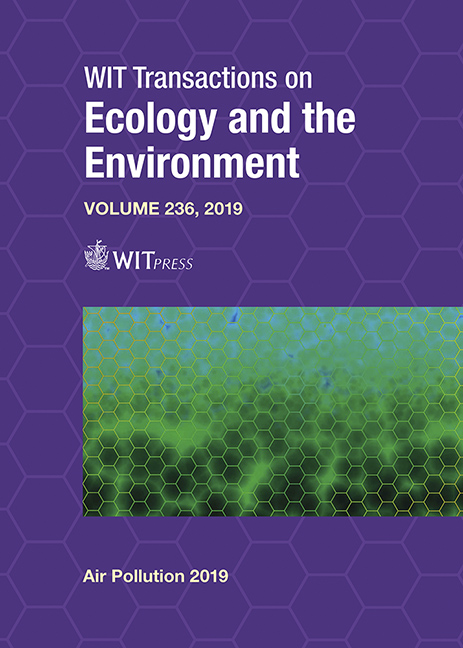ESTIMATING CONCENTRATIONS OF SUSPENDED PARTICULATE MATTER OVER THE METROPOLITAN AREA OF MEXICO CITY USING SATELLITE AND GEOSPATIAL IMAGERY: PRELIMINARY RESULTS
Price
Free (open access)
Transaction
Volume
236
Pages
10
Page Range
119 - 128
Published
2019
Size
625 kb
Paper DOI
10.2495/AIR190121
Copyright
WIT Press
Author(s)
RODRIGO T. SEPÚLVEDA-HIROSE, ANA B. CARRERA-AGUILAR, MAGNOLIA G. MARTINEZ-RIVERA, PABLO DE J. ANGELES-SALTO, CARLOS HERRERA-VENTOSA
Abstract
In order to diminish health risks, it is of paramount importance to monitor air quality; however, this process is accompanied by high costs of physical and human resources. This research is carried out in this context with the main objective of developing a predictive model for concentrations of inhalable particles (PM10 and PM2.5) using remote sensing. To develop the model, satellite images, mainly from Landsat 8, of the Mexico City’s metropolitan area, were used. Using historical PM10 and PM2.5 measurements of the RAMA (Environmental Monitoring Network of Mexico City) and processing the available satellite images, a preliminary model was generated in which it was possible to observe critical opportunity areas that would allow for the generation of a robust model. After applying this preliminary model to the scenes of Mexico City, three areas of great interest were identified due to their presumed high concentration of PM. The zones of interest all presented high plant density, bodies of water and bare soil without buildings or construction, or vegetation. To date, work continues along these lines to improve the proposed preliminary model. In addition, a brief analysis of six distinct models was made and presented in articles developed in different parts of the world in order to visualize the optimal bands for the generation of a suitable model for Mexico City. It was found that infrared bands have helped modelling in other cities, but the effectiveness of these bands for the specific geographic and climatic conditions of Mexico City is still in need of evaluation.
Keywords
air quality, modelling pollution, particulate matter, remote sensing





